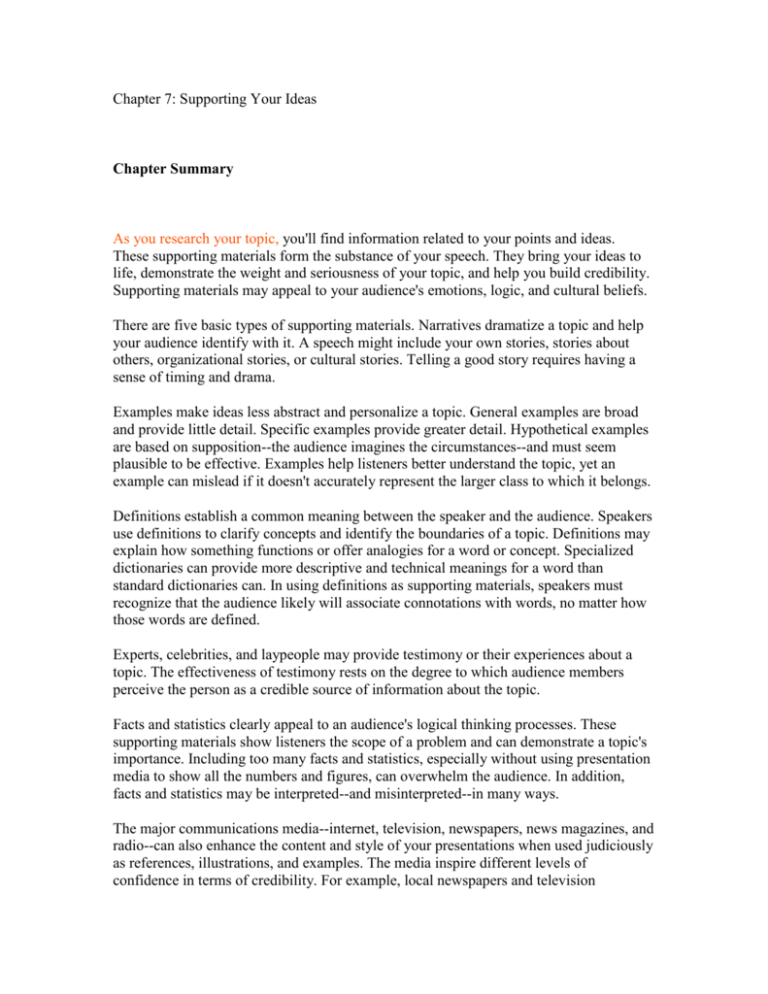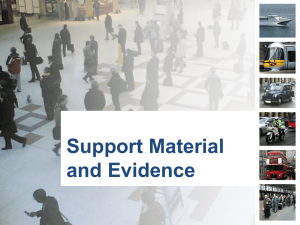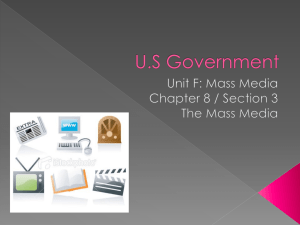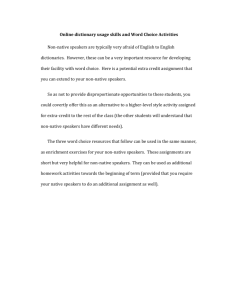Chapter 6: Researching Your Topic
advertisement

Chapter 7: Supporting Your Ideas Chapter Summary As you research your topic, you'll find information related to your points and ideas. These supporting materials form the substance of your speech. They bring your ideas to life, demonstrate the weight and seriousness of your topic, and help you build credibility. Supporting materials may appeal to your audience's emotions, logic, and cultural beliefs. There are five basic types of supporting materials. Narratives dramatize a topic and help your audience identify with it. A speech might include your own stories, stories about others, organizational stories, or cultural stories. Telling a good story requires having a sense of timing and drama. Examples make ideas less abstract and personalize a topic. General examples are broad and provide little detail. Specific examples provide greater detail. Hypothetical examples are based on supposition--the audience imagines the circumstances--and must seem plausible to be effective. Examples help listeners better understand the topic, yet an example can mislead if it doesn't accurately represent the larger class to which it belongs. Definitions establish a common meaning between the speaker and the audience. Speakers use definitions to clarify concepts and identify the boundaries of a topic. Definitions may explain how something functions or offer analogies for a word or concept. Specialized dictionaries can provide more descriptive and technical meanings for a word than standard dictionaries can. In using definitions as supporting materials, speakers must recognize that the audience likely will associate connotations with words, no matter how those words are defined. Experts, celebrities, and laypeople may provide testimony or their experiences about a topic. The effectiveness of testimony rests on the degree to which audience members perceive the person as a credible source of information about the topic. Facts and statistics clearly appeal to an audience's logical thinking processes. These supporting materials show listeners the scope of a problem and can demonstrate a topic's importance. Including too many facts and statistics, especially without using presentation media to show all the numbers and figures, can overwhelm the audience. In addition, facts and statistics may be interpreted--and misinterpreted--in many ways. The major communications media--internet, television, newspapers, news magazines, and radio--can also enhance the content and style of your presentations when used judiciously as references, illustrations, and examples. The media inspire different levels of confidence in terms of credibility. For example, local newspapers and television newscasts receive highly favorable ratings from most Americans, yet internet news outlets are increasingly viewed as a first stop for current information.











